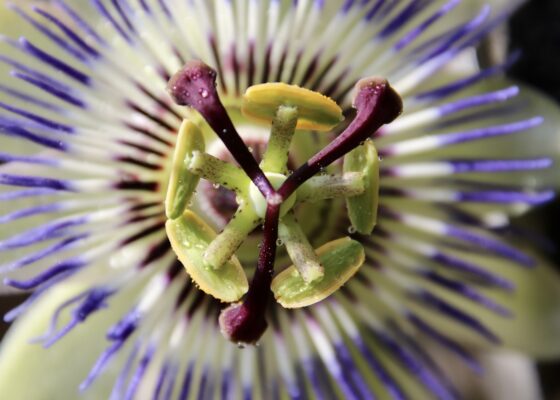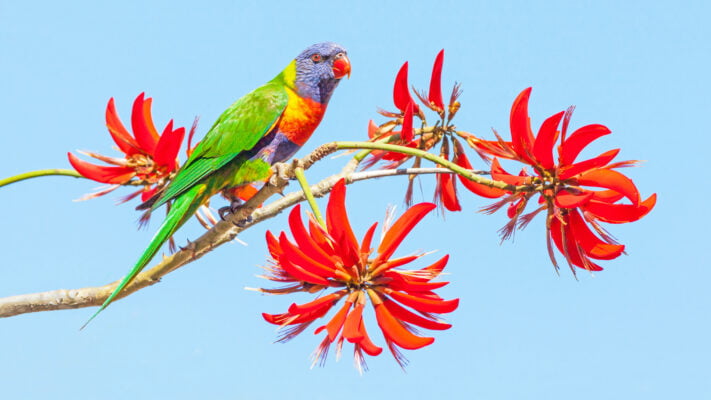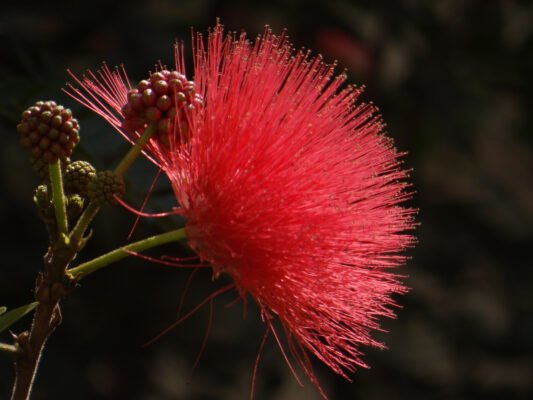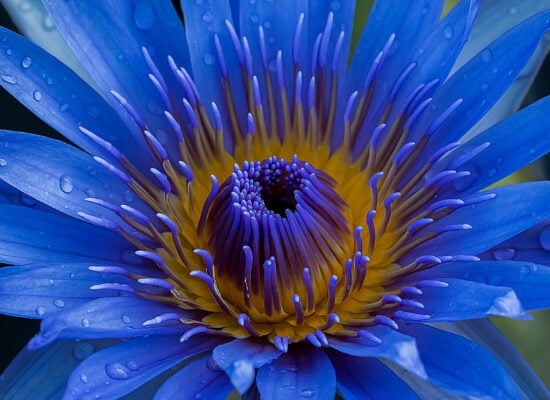More about Dream Herbs
Welcome, dreamers! Have you ever wondered if there’s a way to enhance your dreams and make them more vivid and memorable? Look no further than the world of dream herbs. These natural substances have been used for centuries by cultures across the globe to promote lucid dreaming, improve sleep quality, and even boost creativity.
In this post, we’ll explore some lesser-known dream herbs and their potential benefits, as well as tips on how to safely incorporate them into your nighttime routine. So grab a cup of chamomile tea (another great herb for dreaming!), sit back, and get ready to delve deeper into the fascinating world of dreams. And if you are interested to buy dream herbs here you will find all the information you need and Maya Ethnobotanicals is the right place.
What are Dream Herbs?
Dreams are known to be the doorway to our subconscious mind, a look into the soul. Jung started in more recent times what the ancients always have done: interpret peoples dreams to understand their deepest depths of their souls. The clearer your dreams get either through therapy, spiritual practices, or the use of specific herbs the better you can access that space in slumber land. Getting more clarity in ones dreams the more they can be used to gain useful insights.
Most dream herbs are plants that contain natural compounds that can alter brain function. These plants have been used for centuries or millennia in traditional medicine and shamanic practices to induce altered states of consciousness and promote healing.
The Benefits of Dream Herbs
There are many benefits to dream herbs. They can help induce lucid dreaming, protect the sleep state, and increase creativity. Lucid dreams are those in which the dreamer is aware that they are dreaming. This state can be very beneficial for problem solving and personal growth. Dream herbs can also help to prevent night terrors and nightmares. They can be used to increase the vividness of dreams and improve memory recall.
Dream herbs can also be used as a tool for exploring the subconscious mind. In this state, it is easier to access buried memories and repressed emotions. The use of dream herbs can lead to greater self-awareness and personal insight.
Lucid Dreaming
Lucid dreaming is a state of conscious awareness during sleep. It allows you to control your dreams and explore the subconscious mind. Lucid dreaming has been practiced for centuries by cultures all over the world. Herbs can be used to induce lucid dreams. The most popular dream herbs include:
dreamed about what it would be like to fly? Or what it would feel like to meet your favorite celebrity? With lucid dreaming, you can control your dreams and make them anything you want!
Lucid dreaming is a state of being aware and conscious during sleep. You are in control of your dreams and can explore the depths of your subconscious mind. Lucid dreaming has been practiced for centuries all over the world by many different cultures. There are dream enhancing herbs that when ingested can help induce a lucid dream state.
When taking herbs to enliven your dreams and induce lucid dreams you can learn how to dream recall and bring what you learned into your daily live.
How to Use Dream Herbs
There are many different dream herbs that can be used to induce vivid dreams and lucid dreaming. Each herb has its own unique properties and effects.
If you are interested in trying out dream inducing herbs, it’s important to do your research and start with a small dose. Remember that everyone’s physiology is different and what works for one person may not work for another. Dream herbs have been be taken traditionally in a variety of ways. They have been taken orally in herb form or infused into a tea, some have been smoked or even used as snuffs. Some tribes have burned dried herbs as part of their dream practice.
The Different Types of Dream Herbs
There are many different types of dream herbs from around the world. Each continent has its own. They can be used to induce or enhance dreaming. Each type of herb has its own unique properties and effects. They are different plant types and parts. From herbs, to flowers or seeds, thee are roots like Silene. Maya sells dream herbs in their natural form or as dry and liquid extracts.
Some common dream herbs include:
- African Dream Root (Silene Capensis)
- Blue Lotus (Nymphaea caerulea)
- Bobinsana (Calliandra angustifolia)
- Giant Sea Bean or Snuff Box (Entada Rheedi)
- Guayusa (Ilex Guayusa)
- Kanna (Sceletium Tortuosum)
- Kava Kava (Piper methysticum)
- Lavender (Lavandula Angustifolia)
- Mexican Dream Herb (Calea Zacatechichi)
- Mugwort (Artemisia vulgaris)
- Mulungu (Erythrina mulungu)
- Sacred Lotus (Nelumbo Nucifera)
- Salvia divinorum
- Uqume (Rhus Pauciflorus)
- Uvuma Omhlope (Synaptolepis Kirkii)
- Wild Dagga (Leonotis leonurus)
- Wild Lettuce (Latuca Virosa)
These are just a few of the many different types of dream herbs that are available. Maya Ethnobotanicals offers most of them to those who wish to buy dream herbs.
Some of the most popular dream herbs
Mexican Dream Herb
Calea zacatechichi is a traditional Mexican dream herb that is said to induce vivid and prophetic dreams. It is also said to improve dream recall and lucidity.
Salvia divinorum
A powerful psychoactive plant, salvia divinorum is known for its ability to produce strong visual hallucinations and out-of-body experiences. It is also sometimes used by people seeking spiritual guidance or insight through their dreams. Salvia divinorum is known for its ability to produce strong visual hallucinations and out-of-body experiences. It is also sometimes used by people seeking spiritual guidance or insight through their dreams.
Mulungu
A tree native to Brazil, mulungu is often used in traditional medicine for its sedative and antidepressant properties. It is also said to promote restful sleep and vivid dreaming.
Lavender
Lavender oil is often used to promote relaxation and sleep. It is also said to improve the quality of dreams, making them more pleasant and relaxing.
Passionflower

Passionflower is a common herbal remedy for insomnia and anxiety, but it is also said to promote peaceful dreams and be effective for inducing lucidity in dreams. Passionflower as tea or capsules can be taken before bedtime, or the dried herb can be added to a dream pillow. Passionflower (Passiflora incarnata) is a climbing vine native to the Americas.
Mugwort
Mugwort is another popular dream herb that has been used for centuries. It is said to promote vivid and prophetic dreams, and it is often used in magical rituals related to dreaming. Mugwort can be consumed as a tea, smoked, or added to a dream pillow.
Mugwort (Artemisia vulgaris) – Mugwort is a common dream herb that has been used for centuries to promote lucid dreaming, astral travel, and precognitive dreaming. It is also said to enhance the clarity and intensity of dreams.
Bobinsana
Bobinsana is a powerful dream herb that is native to the Amazon rainforest. It is used by the indigenous people of the region for its ability to induce vivid and lucid dreams. In addition to its dream-enhancing properties, Bobinsana is also said to be helpful in treating a wide range of ailments, including depression, anxiety, and stress.
Silene capensis
Silene capensis is a small, herbaceous plant native to South Africa. The plant has been used for centuries by the Xhosa people for its supposed dream-inducing properties. In recent years, scientific research has begun to explore the possible psychoactive effects of Silene capensis.
Each of these herbs can be found online and many even at your local health food store. Be sure to consult with a healthcare professional if you are pregnant or breastfeeding
Dream herbs around the world
There are many herbs around the world that have been traditionally used to induce dreams. In some cultures, dream herbs are used for divination and prophecy, while in others they are simply enjoyed for their ability to promote vivid and interesting dreams.
Silene Capensis
Silene capensis is a small, herbaceous plant native to South Africa. The plant has been used for centuries by the Xhosa people for its supposed dream-inducing properties. In recent years, scientific research has begun to explore the possible psychoactive effects of Silene capensis.
A 2008 study found that Silene capensis significantly increased dreaming in participants (1). Another study from 2014 found that an extract of Silene capensis was effective in reducing stress and anxiety in rats (2). While more research is needed to confirm the dream-inducing effects of Silene capensis, these studies suggest that the plant may have potential as a natural remedy for insomnia and other sleep disorders.
Mulungu
Mulungu is a tree native to Brazil that has long been used in traditional medicine for its sedative and anti-anxiety properties. The bark and leaves of the mulungu tree are dried and made into teas or tinctures, which are then taken to help induce sleep, reduce stress and anxiety, and promote relaxation.
Mulungu is a dream herb native to Brazil that has been used for centuries by indigenous people to induce vivid and prophetic dreaming. The bark of the mulungu or coral tree tree is traditionally brewed into a tea and consumed before bed. In recent years, mulungu has gained popularity among Westerners as a natural remedy for insomnia and anxiety.
Some studies have shown that mulungu can indeed help to improve sleep quality and reduce stress levels. Additionally, many people find that drinking mulungu tea before bed helps them to recall their dreams more clearly. If you’re interested in trying mulungu for yourself, you can purchase the dried bark or tincture at Maya.
Simply brew a cup of tea using 1-2 grams of dried bark per cup of water, and drink it 30 minutes before going to bed. Indigenous people also have used the beautiful red seeds for a variety uses from medicine to handicrafts.

Calea zacatechichi
This herb is native to Mexico and has been used by the indigenous people there for centuries to induce vivid dreaming. It is said to have a bitter taste, so it is often combined with other herbs or sweeteners to make it more palatable.
Calea zacatechichi Also known as “the dreaming herb” or Mexican Dream Herb and is traditionally used by the Chontal people to induce vivid and lucid dreams. The active compound in calea zacatechichi is thought to be a-thujone, which is also found in other dream-enhancing herbs such as wormwood and sage.
Wild Dagga
Wild dagga is a flowering herb in the mint family, native to South Africa. The active compounds in wild dagga are thought to be similar to those in marijuana, and it has been used for centuries by indigenous people for its psychoactive effects.
Wild dagga is usually smoked, but it can also be brewed as a tea. The smoke is said to be mild and pleasant, with a slightly sweet taste. The effects of smoking wild dagga are typically milder than those of marijuana, with users reporting increased feelings of relaxation and euphoria.
Wild dagga tea is said to produce more dream-like states, and can be used as a sleep aid. Like marijuana, wild dagga is not considered safe for use during pregnancy or while breastfeeding. It is also important to avoid operating heavy machinery or driving while under the influence of this herb.
Bobinsana

Bobinsana (Calliandra angustifolia) is a powerful dream herb native to the Amazon rainforest. It is used by indigenous people to induce vivid and prophetic dreams. The Bobinsana plant is a small tree or shrub that grows to about 10 feet in height. Its leaves are simple and oblong, and its flowers are pink or white. Bobinsana is usually harvested in the rainy season.
To prepare Bobinsana for dreaming, the leaves are crushed and soaked in water overnight. The resulting mixture is drunk before bedtime. Bobinsana is said to bring about flying dreams, which is why it is sometimes called ‘the airplane plant’. It is also said to help dreamers remember their dreams and to interpret their meaning. Bobinsana is considered a sacred plant by indigenous peoples, and it is used in healing ceremonies for its ability to cleanse negative energies.
Uqume
Uqume is a powerful dream herb that has been used for centuries by native cultures in Africa. This herb is known to induce vivid and lucid dreaming, as well as enhance recall of dreams. Uqume can be taken in herb form or brewed as a tea. The tea is made by boiling the leaves of the plant in water.
For those who are new to using this herb, it is recommended to start with a low dose and gradually increase the amount until the desired effect is achieved.
Blue Lotus
Blue lotus (Nymphaea caerulea) is a sacred plant that has been used for centuries in religious and spiritual ceremonies. It has a long history of use in traditional medicine, and is still used today in some cultures. The blue lotus flower is considered to be a symbol of wisdom and knowledge, and is often used in dream interpretation. The blue lotus plant is native to Africa and Asia, and grows in swampy areas.
The flowers are large and blue, with a yellow center. The plant has a strong scent, which can be sweet or musky. The flowers can be eaten fresh or dried, and are often made into tea. When taken as a tea, blue lotus produces mild psychoactive effects. It is said to induce a sense of calm and peace, as well as enhance psychic ability. In some cultures, blue lotus is associated with the goddess Isis, and is used in rituals dedicated to her. The plant is also sometimes used in funerary rites, as it is thought to help the soul transition to the afterlife.

There are a variety of dream herbs that can be used to induce lucid dreaming, but one of the most popular is blue lotus.
Blue lotus (Nymphaea caerulea) is a water lily that has been used for centuries in traditional Egyptian medicine. The flowers and leaves of the plant contain a hallucinogenic substance called apomorphine, which is known to cause visions and other strange effects when ingested. In recent years, blue lotus has become a popular choice for those looking to induce lucid dreams. The herb is said to work by increasing REM sleep, which is when most dreams occur. Some people also report feeling more relaxed and focused after taking blue lotus, which can make it easier to remember your dreams
Uvuma-omhlope
Uvuma-omhlope (also known as Synaptolepis kirkii) is a plant that is native to parts of Africa. It has been used traditionally for centuries in some cultures for its dream-enhancing effects. Some people believe that it can help induce lucid dreams, or provide dream guidance. The active compounds in uvuma-omhlope are thought to be particular alkaloids.
These substances interact with cholinergic receptors in the brain, which are involved in wakefulness and dreaming. To use uvuma-omhlope for dream enhancement, it is typically brewed as a tea. The dried root or leaf can be boiled in water for 10-15 minutes, then strained. The tea can be taken before bedtime or upon waking from a dream. The leaves have been smoked as well.
In addition to its use as a dream herb, Uvuma Omhlope is also used as a remedy for headaches, stomachaches, and anxiety.
Giant Sea Bean
Giant sea beans are a type of seed that washes up on shores all over the world. These strange looking seeds can grow to be over a foot long, and they have a hard, leathery shell. Inside the shell is a soft, white flesh that contains the plant’s embryo.
Giant sea beans are often found in driftwood or among seaweed on beaches. They are sometimes called “drift seeds” or “sea potatoes”. Some people believe that these seeds have mystical powers and can be used in dream work or spell-casting.
Shamanic Dream Herbs
Many Shamanic and pagan cultures have developed their mysticism in their dreams. The dream state is seen as a reality, not just a dream. There are techniques to wake up in the dream state and consciously move around. There is also astral travelling in the dream state.
Many cultures from the South African Xhosa to the Indigenous groups of South America do healings in the dream state and bring back from their dreams their revelations and visions. Shamans receive songs and prayers in their dreams and even whole stories and myths are revealed to them in the dream state.
Many tribes achieve this lucid dreaming through meditation and other practices. Some like in South America use Ayahuasca to elevate their state of mind to be able to dream better although it is not necessarily a Dream Herb. Shamanic dream herbs are plants that have been used by shamans for centuries to induce dreaming and visions. Dream Herbs are plants that are in general taken before going to sleep to alter the state of mind of the subject when asleep.
Xhosa Dream Herbs
In the Xhosa culture of South Africa, dream herbs are used to induce visionary experiences and promote spiritual growth. The primary dream herb is Silene capensis, also known as “African nightshade”. This herb is ingested prior to sleep, in order to have visionary dreams. Other dream herbs used by the Xhosa people include “Wild Dagga” or Leonotis leonurus (lion’s tail) and Sceletium tortuosum (kanna).
The use of dream herbs is an important part of the Xhosa people’s traditional belief system. Dreaming is seen as a way to commune with the spirit world and gain guidance from ancestors. These visionary dreams can provide insight into problems or challenges faced in waking life. Ingesting dream herbs is also thought to promote spiritual growth and understanding.
Buy Dream Herbs
Maya Ethnobotanicals has a wide variety of Dream Herbs on offer. Dream Herbs have been used around the world in Shamanic and Pagan traditions. If you want to buy Dream Herbs do your research which one resonates most with you. If you Buy Silene Caapensis Dream Root or buy Mulungu for good rest, buy Calea zacatechichi or buy any other Dream Herb, Maya is the place to find what you need. Always with the quality that you have known from us in the past 23 years.
Conclusion
Dream herbs can be a powerful and unique way to explore your subconscious mind. With the right preparation, they offer a variety of benefits such as improved dreaming abilities, relaxation, increased creativity and spiritual insight. Be sure to choose only safe and natural dream herbs that are free from additives or chemicals that could potentially harm you. Finally, remember to consult with a qualified healthcare provider before you begin any herbal supplement program in order to ensure your safety.
